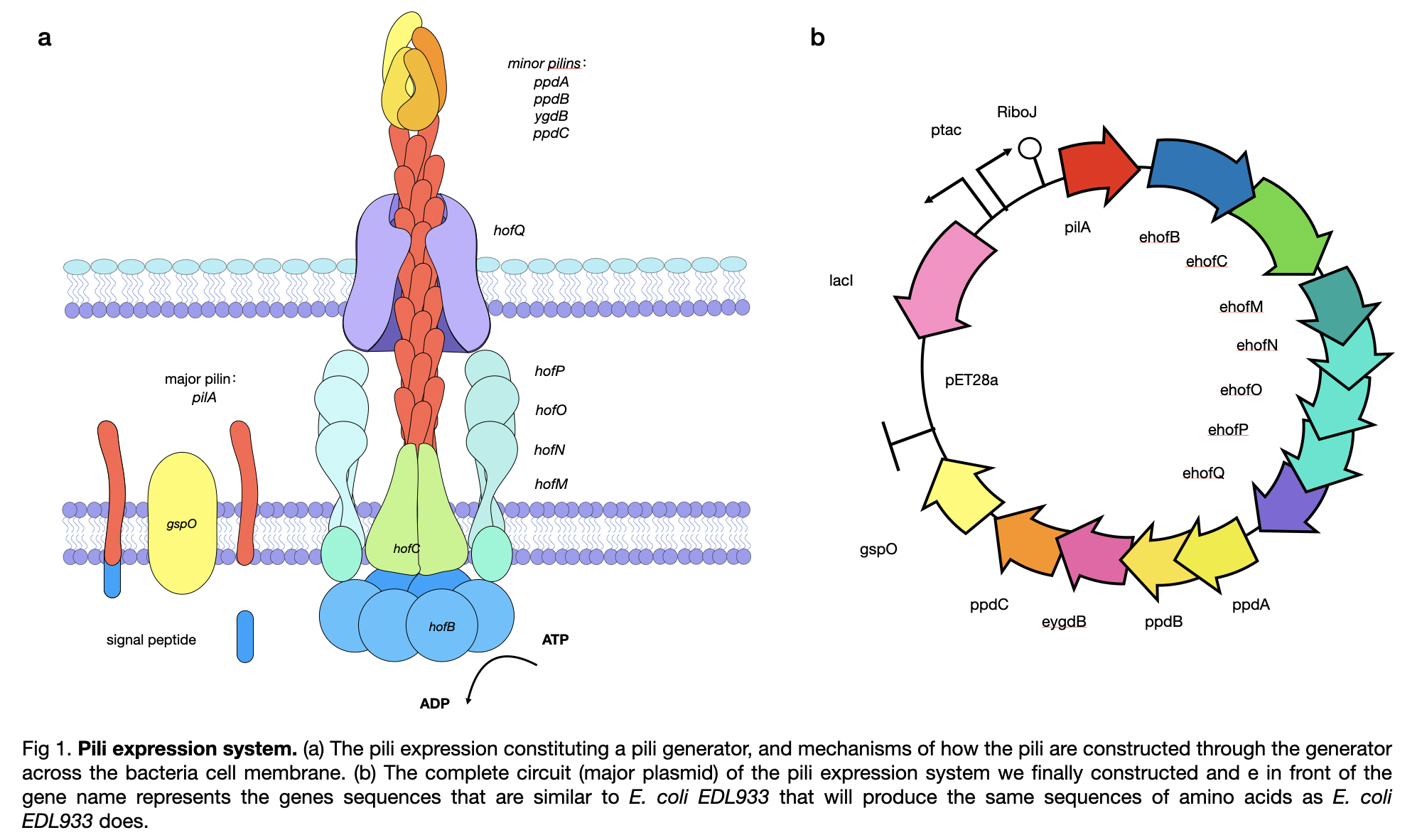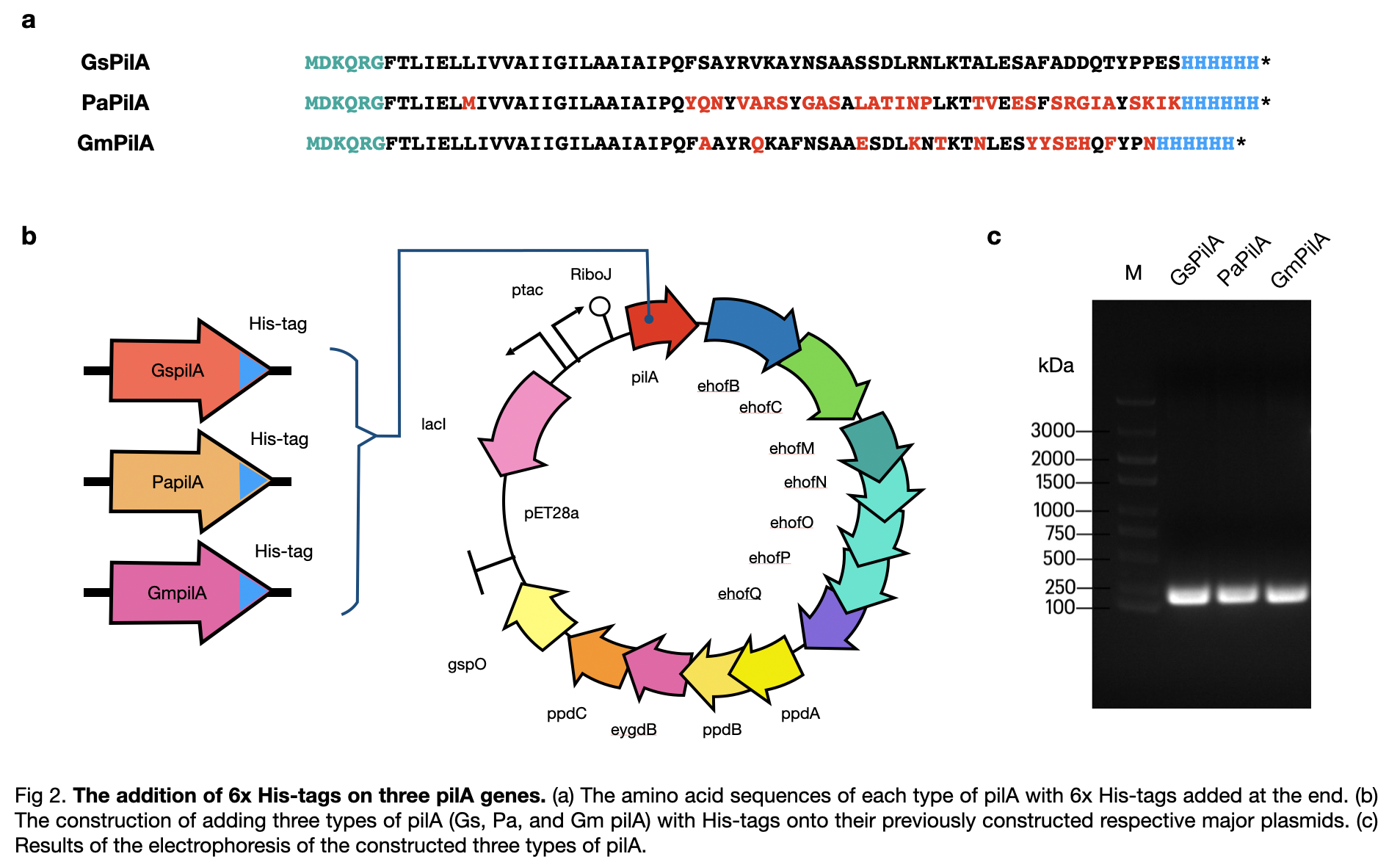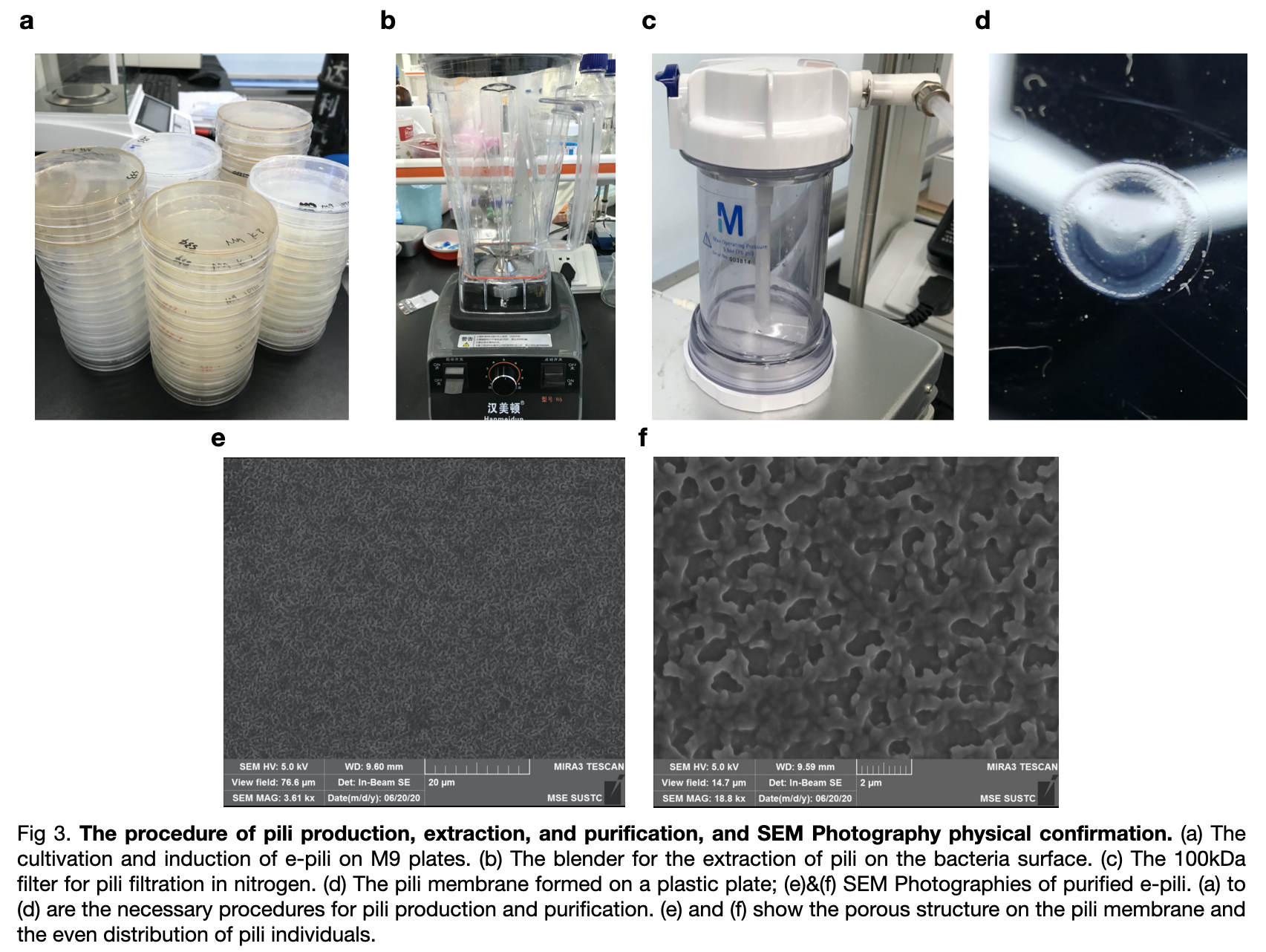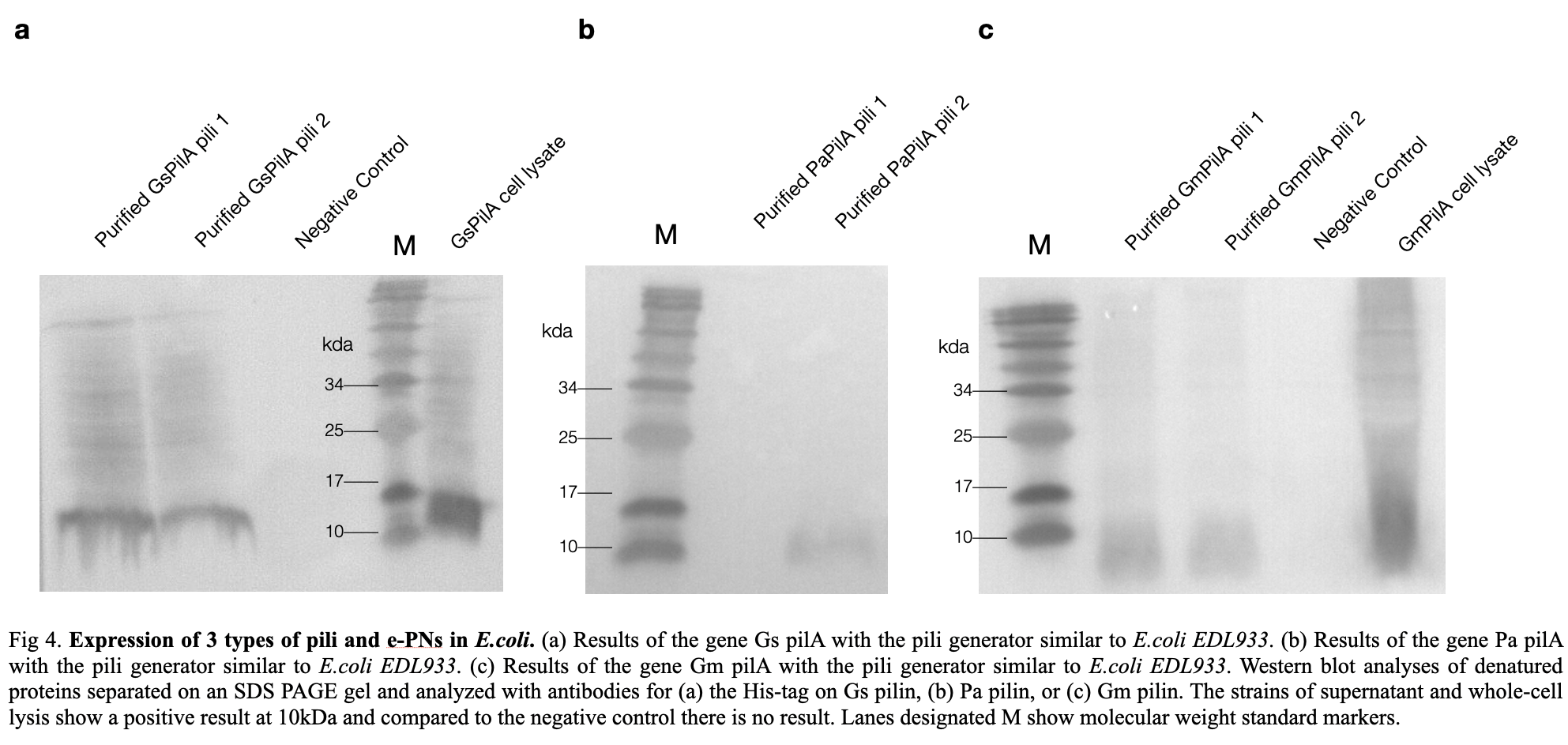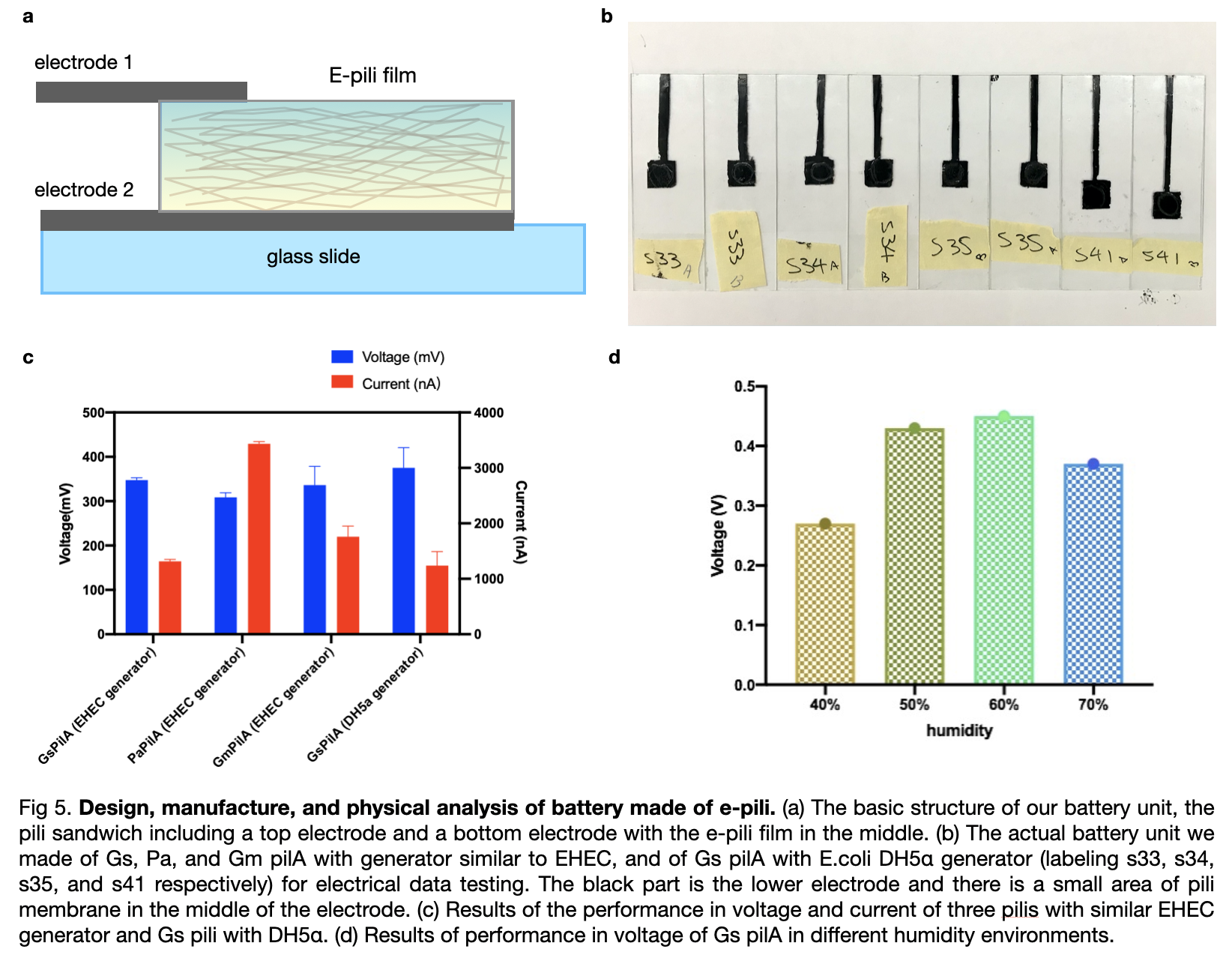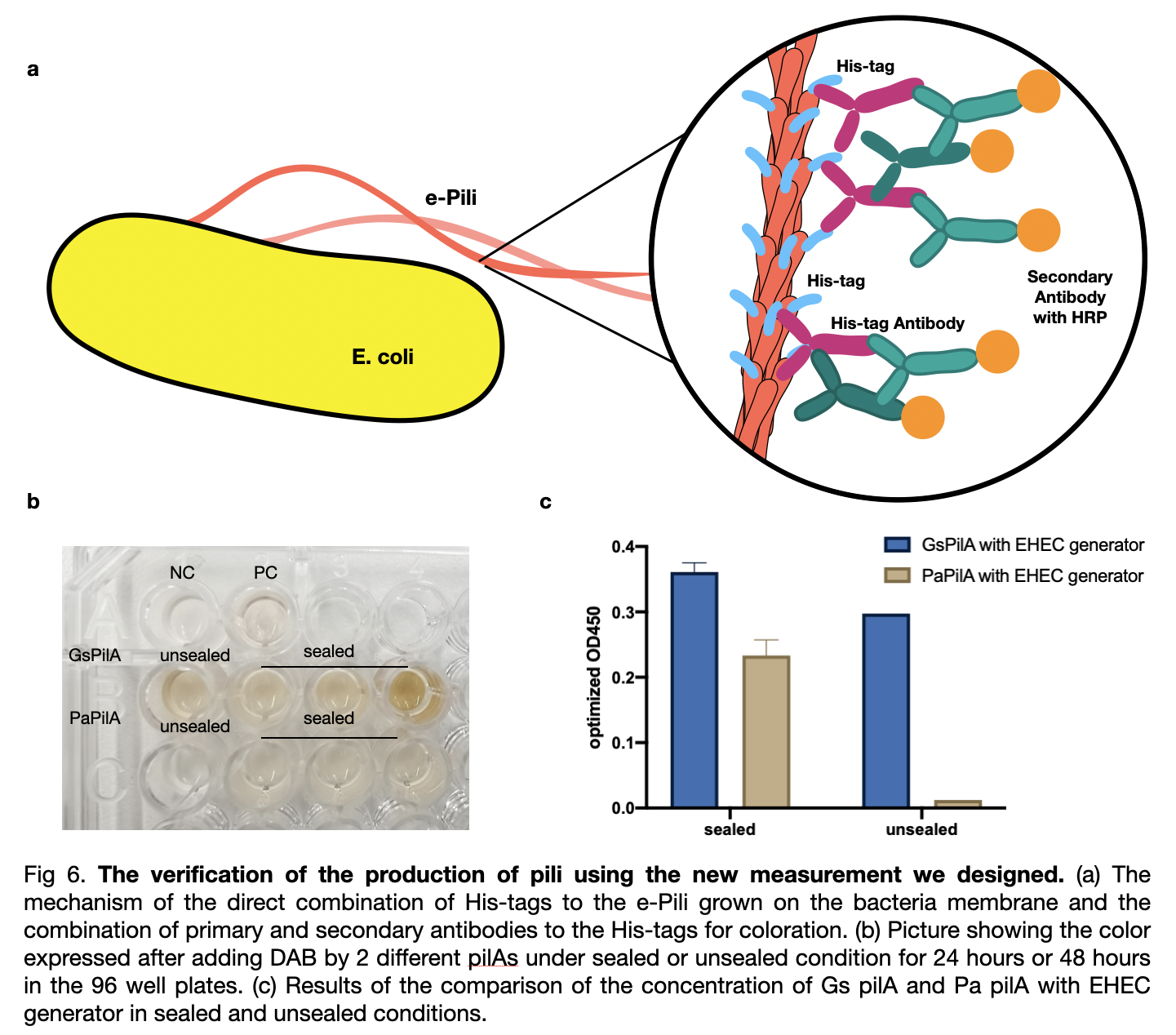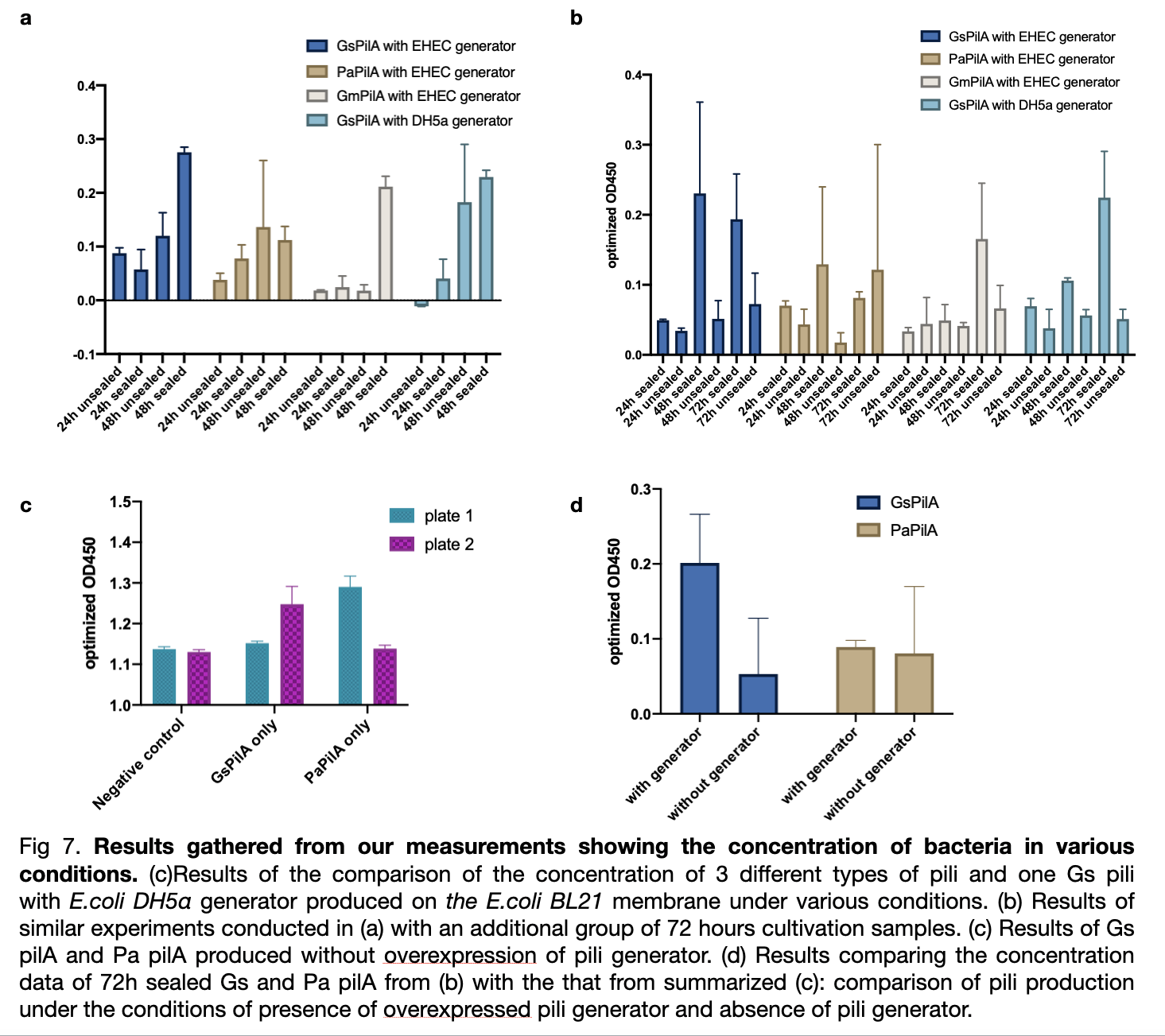Part:BBa_K3552000
GsPilA
GsPilA is a type 4 pilus generally on Geobacter sulfurreducens which can conduct electricity. This part is in the part collection where we provide different conductive pilus based on the same pilin generator. By these different type 4 pilus we can compare the qualities.
The part collection includes: Parts that are different kinds of type 4 pilus: BBa_K3552000 BBa_K3552001 BBa_K3552002. Parts that are the generator of the type 4 pilus: BBa_K3552003 BBa_K3552004 BBa_K3552005 BBa_K3552006 BBa_K3552007 BBa_K3552008 BBa_K3552018 BBa_K3552019 BBa_K3552020 BBa_K3552021 BBa_K3552022 BBa_K3552023 BBa_K3552024 BBa_K3552025 BBa_K3552026 BBa_K3552027 BBa_K3552028 BBa_K3552029. Parts that are a complete circuit: BBa_K3552009 BBa_K3552010 BBa_K3552011 BBa_K3552012.
Our part collection can instruct other teams to designed new rechargeable pilus and substitution of different major pilin.
Sequence and Features
- 10COMPATIBLE WITH RFC[10]
- 12COMPATIBLE WITH RFC[12]
- 21COMPATIBLE WITH RFC[21]
- 23COMPATIBLE WITH RFC[23]
- 25COMPATIBLE WITH RFC[25]
- 1000COMPATIBLE WITH RFC[1000]
Reference
Luna Rico, Areli et al. “Functional reconstitution of the type IVa pilus assembly system from enterohaemorrhagic Escherichia coli.” Molecular microbiology vol. 111,3 (2019): 732-749. doi:10.1111/mmi.14188
Usage and Biology
GsPilA are fimbrial protein which normally grow on Geobacter sulfurreducens. They are type 4 pili which are long and thin which display on the cell surface membrane. They can promote adherence, motility and transport functions in the bacteria. They are mainly built as helical polymers of a single subunit called the major pilin. These pilins are initially in the plasma membrane and the N-terminal is positively charged. The mature pilins will be extracted through the membrane by the pilin generator.
Characterization
We first constructed the GsPilA by SOE PCR through 8 different primers to maintain the exactly same amino acid sequence as in the Geobacter sulfurreducens. After the final construction of the generator of PilA, we added six His-tag to the GsPilA and expressed the gene in vivo in E.coli BL21. After 48 hours of growth, we extracted the pili and verified the existence of GsPilA on the outer cell through Western Blot. We also do electronic speculum and see the clear image of the pili in the solution.
To get a complete pili production system, we first ordered oligo DNAs from Gs pilA gene and assembled them by SOE PCR to acquired its completely same amino acid sequence as expressed by EHEC genes. Then we constructed the generator of the pili and obtain a complete circuit of BBa_K3552010 .
For pili expression, we chose E.coli BL21 because it is the best fit to our project as it has the highest pili yield among them and is easy to obtain. On the cultivation part, we cultured the bacteria in solid M9 medium. Additionally, we provide the bacteria with glycerol as the carbon source because it was confirmed to help improve the conductivity of the pili produced.
We transformed BBa_K3552010 into E.coli BL21. Then we cultivated the bacteria and harvested the bacteria from M9 plates after 48h cultivation by scrapping them off again with liquid M9 solution and collect the bacteria solution. By conducting the extraction and purification on the samples, we managed to get an amount Gs pili solution dissolving in 150mM ethanol-amine after filtration with a 100kDa membrane in nitrogen gas.
We also ordered a SEM Photography for our pili on the photographs, we can see that the pili was distributed evenly on the surface in porous structures between each pili individuals. In order to confirm the E.coli produced the correct e-pili, we conducted Western Blot experiment to convince the production. According to the positive strands on the membrane, Pili was confirmed to be produced and purified successfully, with an expected molecular mass of 10kDa.
We also conducted experiments to measure the voltages of each batteries. First we manufactured six standard electrodes by using three pili, two pieces each, all with triple layer of pili covered. Then we measured the voltage and compared the result which shows that Gm pili has the highest value of measured voltage where Gs pili has the least.
In order to compare the pili yield, we established a new measurement for a quicker, clearer, and more accurate determination of pili production. We use his-tags antibodies to attach on the his-tags on the pili, and then the secondary antibodies will attached to the his-tags antibodies for coloration directly on the outer membrane of the bacteria. We analyse the datas and included the effects of two variables on pili production: cultivation time and mobile oxygen presence. The result shows a ranking from Gs pili to Pa pili to Gm pili.
| None |

